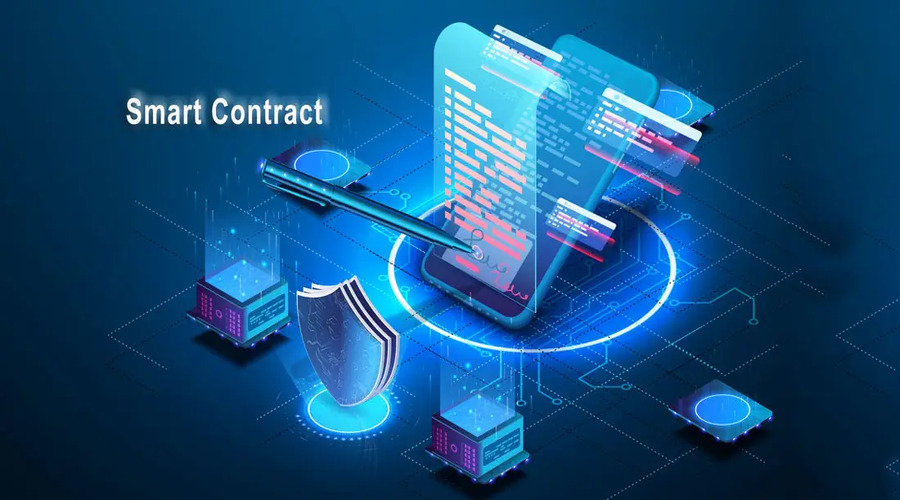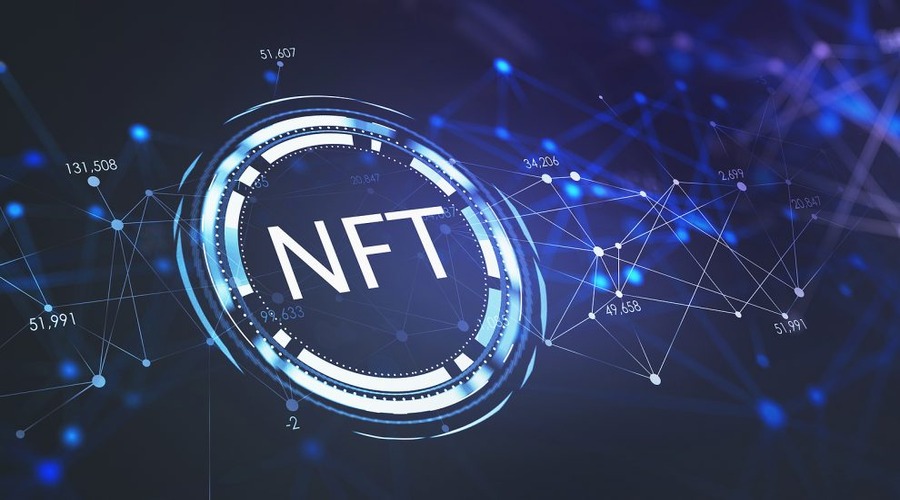
The world of blockchain technology has revolutionized various industries, and one of its key components is the smart contract. Smart contracts are self-executing agreements with the terms of the agreement directly written into lines of code. While these contracts offer numerous benefits, they are not immune to vulnerabilities. Additionally, the rise of NFT (non-fungible tokens) has introduced its own set of security implications. In this article, we will explore the vulnerabilities in smart contracts and the security considerations surrounding NFTs.
Introduction to Smart Contract
The advent of blockchain technology brought forth a decentralized approach to conducting transactions and executing agreements. Smart contracts play a vital role in this ecosystem by automating the execution of agreements without the need for intermediaries. These contracts are powered by blockchain platforms such as Ethereum and enable the creation of decentralized applications (DApps) and various other use cases.
What are Smart Contracts?
Smart contracts are computer programs that automatically facilitate, verify or enforce the negotiation or performance of an agreement. They are self-executing and operate based on predefined rules. Once deployed on the blockchain, smart contracts execute as programmed without any possibility of censorship, downtime, fraud, or third-party interference.
Importance of Smart Contract in the Blockchain
Smart contracts offer numerous advantages in the blockchain ecosystem. They eliminate the need for intermediaries, reduce costs, enhance transparency, and increase efficiency. By automating processes and removing the reliance on intermediaries, smart contracts have the potential to revolutionize industries such as finance, supply chain management, real estate, and more.
Vulnerabilities in Smart Contract
While smart contracts provide a secure and efficient way to execute agreements, they are not infallible. Several vulnerabilities can be exploited by attackers, leading to financial losses or other harmful consequences. It is crucial for developers and users to be aware of these vulnerabilities and take appropriate security measures. Let’s explore some of the common vulnerabilities found in smart contracts:
- Reentrancy Attacks: Reentrancy is a vulnerability where a contract can be called multiple times before the previous invocation is completed. This allows attackers to repeatedly enter the contract and drain its funds or cause unexpected behavior. The infamous DAO hack in 2016 was a result of a reentrancy attack.
- Integer Overflow and Underflow: Integer overflow and underflow occur when arithmetic operations on integers exceed their maximum or minimum values. These vulnerabilities can be exploited to manipulate calculations, resulting in unintended consequences. Proper input validation and using safe math libraries can help mitigate these vulnerabilities.
- Denial-of-Service (DoS) Attacks: Smart contracts are susceptible to Denial-of-Service attacks, where an attacker can intentionally consume excessive resources, rendering the contract unresponsive or causing it to malfunction. This can disrupt the functionality of decentralized applications relying on the contract.
- Logic Errors: Logic errors occur when there are flaws in the design or implementation of a smart contract. These errors may not be immediately apparent and can lead to unintended behaviors or security vulnerabilities. Thorough code reviews and testing can help identify and address logic errors.
Real-World Examples of Smart Contract Vulnerabilities
To understand the impact of smart contract vulnerabilities, let’s examine a few notable examples:
- The DAO Hack: In 2016, a vulnerability in The DAO, a decentralized autonomous organization built on the Ethereum blockchain, was exploited, resulting in the theft of millions of Ether. The attacker exploited a reentrancy vulnerability, allowing them to withdraw Ether from The DAO contract repeatedly.
- Parity Multisig Wallet Bug: In 2017, a bug in the Parity multisig wallet contract led to the freezing of approximately $300 million worth of Ether. The bug allowed an attacker to take control of the contract and overwrite its code, effectively rendering the funds inaccessible.
Best Practices for Securing Smart Contract
To mitigate vulnerabilities in smart contracts, developers should follow best practices for secure coding. Here are some recommendations:
- Code Audits and Formal Verification: Conducting thorough code audits and employing formal verification techniques can help identify vulnerabilities and ensure the correctness of smart contract code. Security experts can review the code for potential weaknesses and suggest improvements.
- Using Well-Established Libraries and Frameworks: Using well-established libraries and frameworks reduces the likelihood of introducing new vulnerabilities. These libraries have undergone rigorous testing and have a community of developers actively maintaining and improving them.
- Implementing Access Control Mechanisms: Implementing access control mechanisms within smart contracts is crucial to ensure that only authorized parties can execute certain functions or access sensitive data. Properly defining roles and permissions helps prevent unauthorized actions.
- Keeping Smart Contracts Simple: Simplicity is key when it comes to smart contract development. Complex contracts are more prone to errors and vulnerabilities. By keeping contracts simple and modular, it becomes easier to understand, test, and audit them for potential issues.
NFTs and their Relationship with Smart Contract
NFTs have gained significant popularity in recent years, enabling the ownership and trading of unique digital assets on the blockchain. NFT relies heavily on smart contracts to manage ownership, transfers, and other functionalities. However, the security implications surrounding NFTs are unique and require special attention.
Security Implications in NFTs

While NFTs provide a new paradigm for digital ownership, they also introduce security considerations that differ from traditional cryptocurrencies. Some of the key security implications in NFTs include:
- Ownership and Transfer Issues: NFT ownership is tied to the ownership of a corresponding smart contract. If the contract is compromised, it can result in the loss of ownership or unauthorized transfers. Properly securing the smart contract is crucial to maintain the integrity of NFT ownership.
- Fake or Counterfeit NFTs: The rise of NFTs has led to the emergence of fake or counterfeit NFTs. These fraudulent assets can deceive buyers and cause financial losses. Implementing verification mechanisms and educating users can help mitigate the risk of counterfeit NFTs.
- Malicious Code in NFT Metadata: NFTs often contain metadata that provides additional information about the asset. Malicious actors can exploit vulnerabilities in metadata parsers to execute arbitrary code or perform phishing attacks. Careful validation and sanitization of metadata are essential to prevent such exploits.
- Centralized Points of Failure: Although blockchain technology aims to eliminate central points of failure, certain aspects of NFTs, such as marketplaces or storage solutions, may still rely on centralized systems. Any vulnerabilities or compromises in these centralized components can pose risks to the security and availability of NFTs.
Ensuring NFT Security
To enhance NFT security, various measures can be taken:
- Smart Contract Audits for NFT Platforms: NFT platforms should conduct comprehensive audits of their smart contracts to identify and address vulnerabilities. Regular security assessments and code reviews can help maintain a secure environment for NFT transactions.
- Secure Wallet Management: Users should adopt best practices for wallet management, including using hardware wallets or secure software wallets, enabling two-factor authentication, and regularly updating wallet software. Securely storing private keys is crucial to prevent unauthorized access.
- Educating Users about NFT Risks: Raising awareness among NFT users about the potential risks and vulnerabilities is essential. Providing educational resources and guidelines can help users make informed decisions and take necessary precautions.
- Enhancing Marketplace Security: NFT marketplaces should prioritize security measures, including robust user authentication, secure payment gateways, and continuous monitoring for suspicious activities. Implementing user ratings and reviews can also help identify trustworthy sellers and mitigate the risk of fraudulent NFTs.
Conclusion
Smart contracts have revolutionized the way agreements are executed on the blockchain. However, they are not immune to vulnerabilities. Understanding and addressing these vulnerabilities is crucial to ensure the security and integrity of smart contracts. Additionally, NFTs introduce their own security considerations, which require specific measures to protect the ownership and integrity of unique digital assets. By implementing best practices, conducting audits, and educating users, we can enhance the security of smart contracts and NFTs in the blockchain ecosystem.
FAQs
- What are smart contracts?
- Smart contracts are self-executing agreements written as lines of code that automatically execute and enforce the terms of an agreement without the need for intermediaries. They operate on blockchain platforms and enable the decentralized and transparent execution of agreements.
- How do smart contracts work?
- Smart contracts work by deploying code onto a blockchain network. Once deployed, they can receive inputs and execute predefined actions based on the conditions programmed within the contract. The execution is transparent and tamper-proof, as it relies on the consensus mechanism of the blockchain.
- What are some common vulnerabilities in smart contracts?
- Common vulnerabilities in smart contracts include reentrancy attacks, integer overflow and underflow, denial-of-service (DoS) attacks, and logic errors. These vulnerabilities can be exploited by attackers to manipulate contract behavior, drain funds, or cause disruptions in the contract’s functionality.
- Can smart contract vulnerabilities be fixed?
- Yes, smart contract vulnerabilities can be fixed. It requires identifying and addressing the specific vulnerability through code revisions, audits, and security testing. Additionally, following best practices for secure coding and regularly updating the contract to address new vulnerabilities can help mitigate risks.
- What are NFTs, and how do they relate to smart contracts?
- NFTs, or Non-Fungible Tokens, are unique digital assets that are indivisible and distinguishable from one another. NFTs rely on smart contracts to manage ownership, transfers, and other functionalities. The smart contract defines the rules and conditions for NFT ownership, enabling secure and transparent transactions in the NFT ecosystem.
